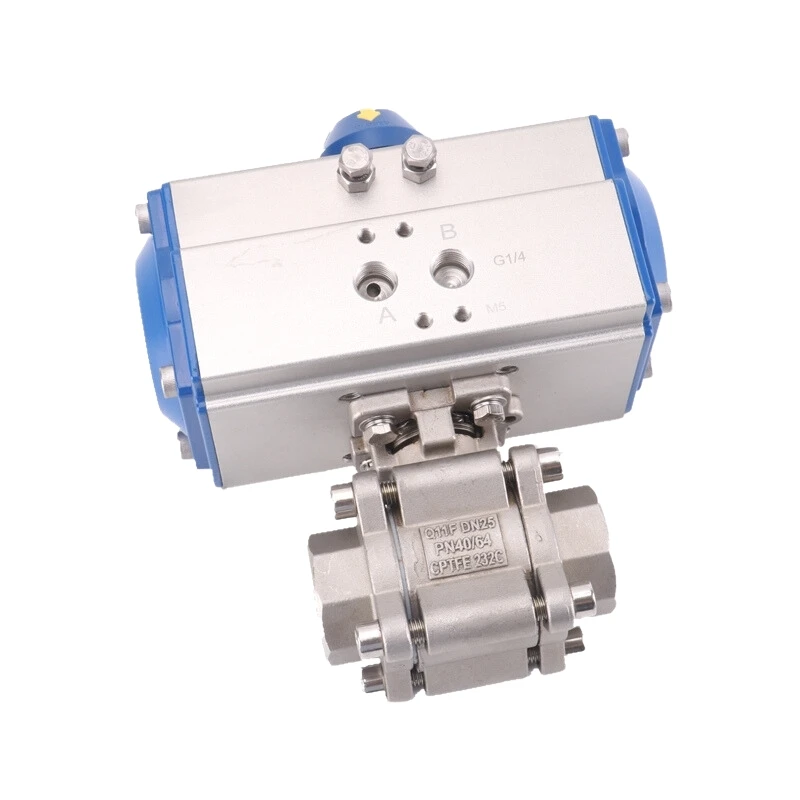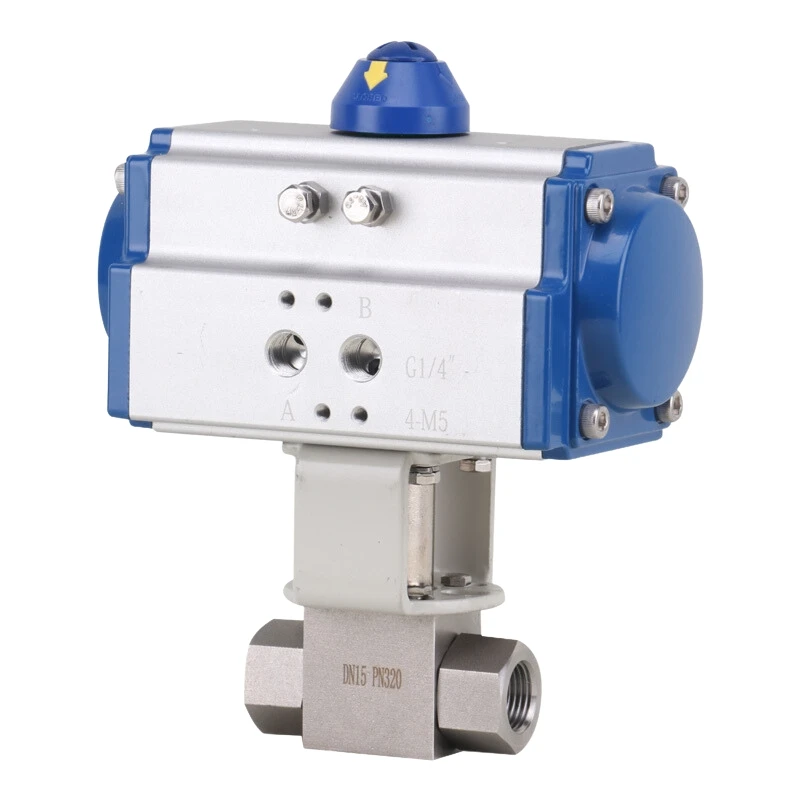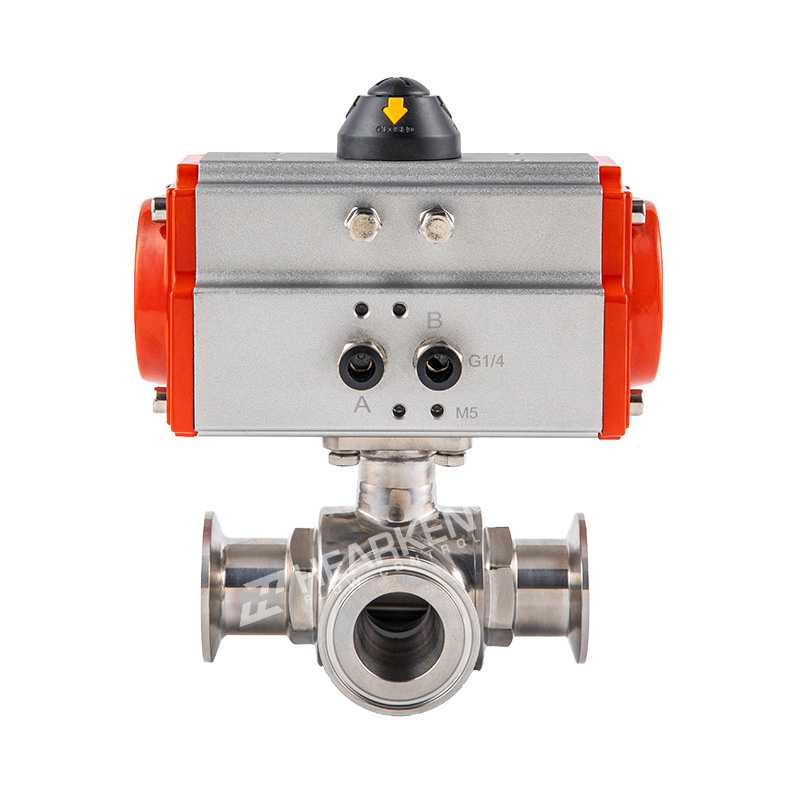Thread Ball Valve
Sanitary 3 Way Pneumatic Ball Valve
Sanitary three-way ball valve has T type and L type. It is mainly used for medium switch
What is a threaded ball valve?
A threaded ball valve is a type of ball valve that features threaded connections for attaching to piping systems. These threads allow the valve to be screwed directly onto the pipe ends, providing a secure and easy installation. Threaded ball valves are commonly used in various applications ranging from residential plumbing to industrial processes due to their robustness, reliability, and ease of maintenance.
Key Features of Threaded Ball Valves:
-
Ball Mechanism: The core component is a ball with a hole (or bore) through its center, which aligns with the flow when the valve is open and blocks flow when turned perpendicular to the pipeline.
-
Operation: These valves are typically operated manually via a handle that rotates the ball inside the valve body. However, they can also be equipped with actuators for automated control.
-
Material Construction: Threaded ball valves are made from a variety of materials including brass, stainless steel, and PVC, chosen based on the specific requirements of the application, such as chemical resistance or pressure handling.
-
Thread Types: The threads can be either male or female, and are often designed to conform to industry standards like NPT (National Pipe Taper) in North America or BSP (British Standard Pipe) in other parts of the world.
-
Applications: They are ideal for use in applications where quick and easy disconnection or replacement of valves is necessary without the need for welding or flanging. This makes them especially useful in tight spaces or in systems that require frequent maintenance or updates.
What is the difference between a threaded and a flanged valve?
The main differences between threaded and flanged valves lie in their design for connecting to piping systems, their typical applications, and their ease of installation and maintenance. Both types serve the same fundamental purpose of controlling flow in a system, but they are suited to different environments and operational needs.
Threaded Valves
Connection Type:
- Threaded valves have male or female threads that screw directly onto the pipe ends. This type of connection is generally used for smaller pipe diameters and lower-pressure applications.
Installation:
- They are relatively easy to install and do not require special tools or equipment. The threaded connection allows for quick attachment or detachment from the system, which is ideal for areas with limited space or for systems requiring frequent maintenance.
Use Cases:
- Threaded valves are commonly used in residential and light commercial applications, such as water systems, small boilers, and air compression systems.
Pros:
- Cost-effective and simple to install without specialized labor.
- Convenient for small systems or tight spaces.
Cons:
- Not suitable for large diameter pipes or very high-pressure conditions because the threads can be a source of leaks under high stress.
- Repeated disassembly can wear out the threads, leading to leaks.
Flanged Valves
Connection Type:
- Flanged valves have a set of flanges that are bolted together with a gasket between them to form a seal. The flanges are typically part of the valve body or can be welded to it.
Installation:
- Installation of flanged valves is more complex and usually requires bolting the valve to a matching flange on the pipe. This type of connection is generally used for larger pipe diameters and higher-pressure applications.
Use Cases:
- Flanged valves are prevalent in commercial and industrial applications, including large water treatment plants, oil and gas pipelines, and chemical processing facilities.
Pros:
- Suitable for high-pressure systems and large pipe diameters.
- Easier to maintain in systems where valves need to be removed frequently for inspection and repair, as the bolted connection can be disassembled and reassembled without damaging the valve or pipes.
Cons:
- More expensive due to the complexity of the flanges and the need for gaskets and bolts.
- Installation requires more space around the pipeline to accommodate the flanges and the tools needed for bolting.








